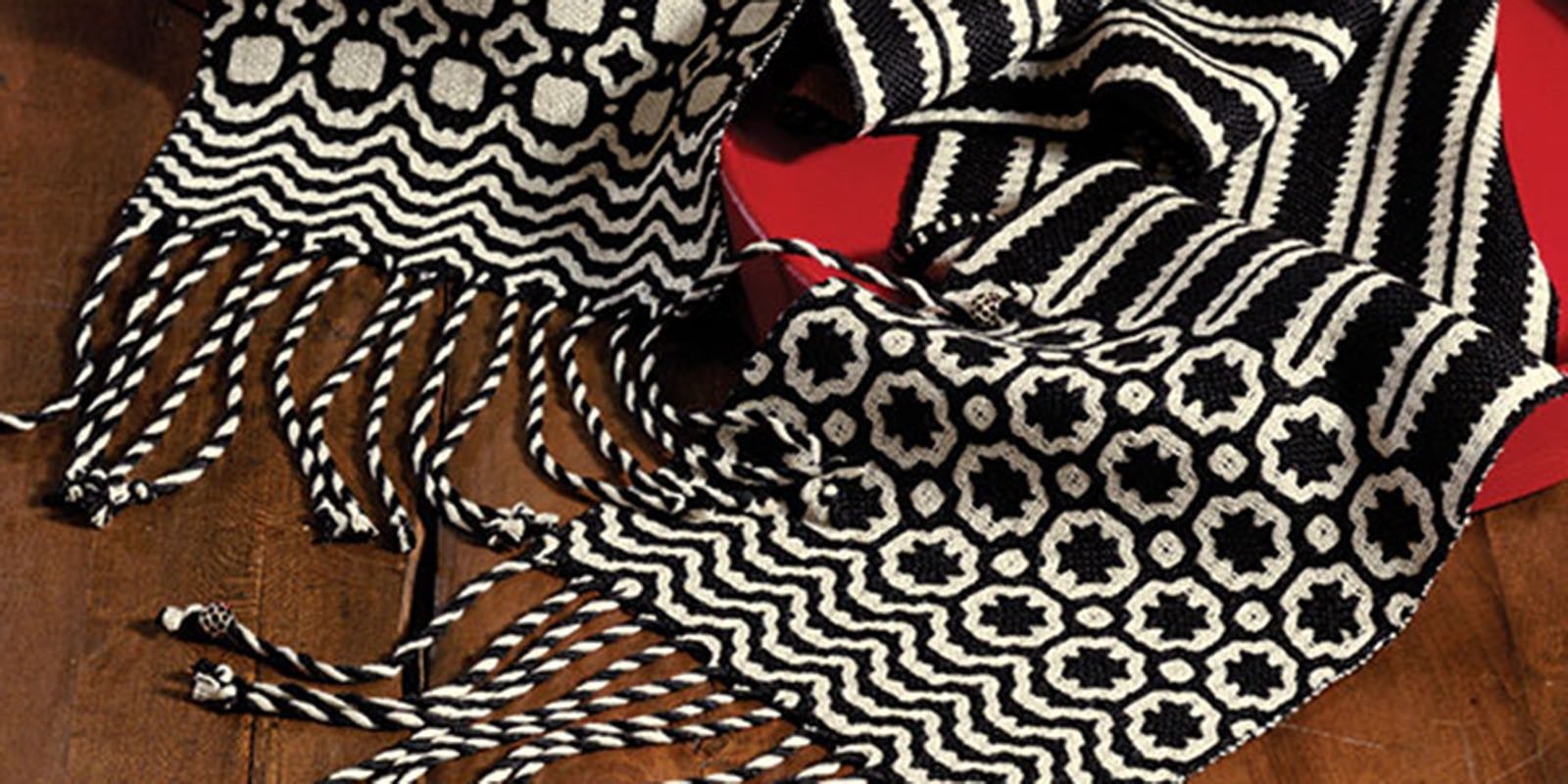 | |
| Madelyn weaving a coverlet on a shaft drawloom | |
 | |
| Deflected doubleweave scarf |
If I were allowed only one weave structure, I would pick doubleweave, no question. I became a weaver because of doubleweave, in fact. In the early 1970s, my husband and I collected “old” textiles. Favorites were jacquard-woven doubleweave coverlets and scraps of coverlets. At that time, I had no idea that people currently alive could weave anything like them—nor that people currently alive could weave at all. Then I saw someone weaving at a craft fair. Even though she was weaving overshot potholders on a table loom, I jumped right away to the conclusion that if people currently alive could weave at all, they could weave doubleweave coverlets. And if they could, I could.
Too bad it wasn’t that simple. And really lucky it wasn’t that simple. I told all the weavers I could find that I wanted to weave a doubleweave coverlet with images of my farm in the borders, just like the trains that ran around the border of an 1850s coverlet I loved. No one discouraged me (weavers tend to say “oh, no problem”; they want you to become a weaver, too). I thought it might take me a year or so, but eventually I’d figure out what loom would weave my cows and corn and sheep, and I’d get it woven.
It was a painful comeuppance to learn that my first loom, with its four shafts, wasn’t going to do the job except with pick-up. (And Jennifer Moore’s great book and videos didn’t exist then!)
 | |
| Coverlet corners from 1985 | |
 | |
| Doubleweave piqué pick-up | |
 | |
| Color windows in doubleweave | |
On the way to that bit of information, though, I did learn how to do doubleweave pick-up; I even learned to love it. But pick-up for two panels forty-eight inches wide and two yards long seemed daunting. Besides, I had discovered a love second only to doubleweave: looms.
My fourth loom was a drawloom that had the capacity to weave ten blocks of doubleweave, more or less loom-controlled. I was off and running (no sheep, cows, or corn, but snowballs and pine trees, a start). I decided I could handle pick-up in the corners for a date. I did pick-up in one of the corners upside down so it would read correctly from the white side of the coverlet and finished it before I looked underneath to see that I had woven the date 5891. I learned a lot about unweaving.
Ten years later, my eleventh loom, a different kind of drawloom, actually could weave the coverlet I started out wanting to weave. But by then, in addition to loving looms, I had fallen in love with other aspects of weaving—the best of them still related to doubleweave. I started stuffing the layers and bending the threads and playing with color, and I haven’t finished yet.
You can’t ever have too much doubleweave.


